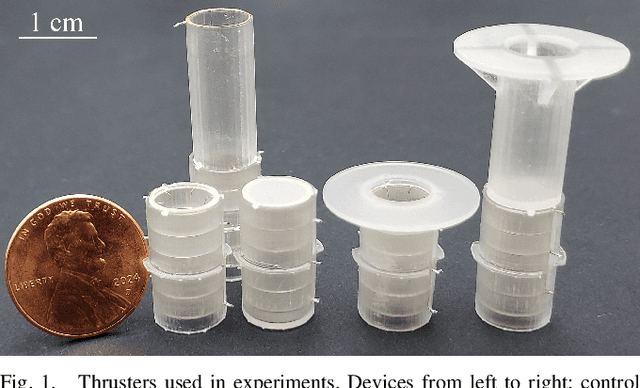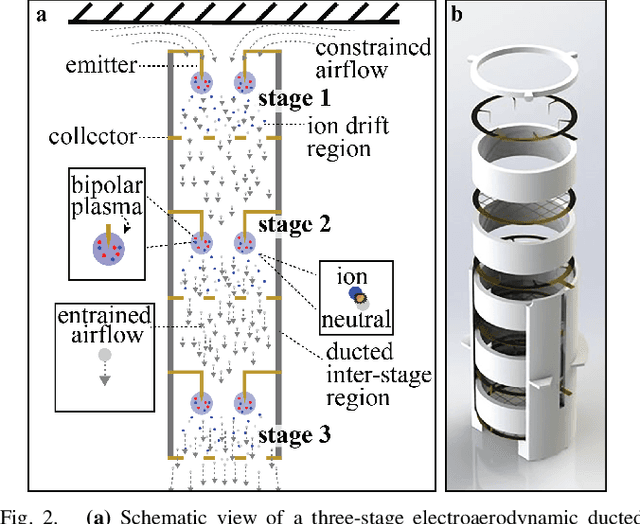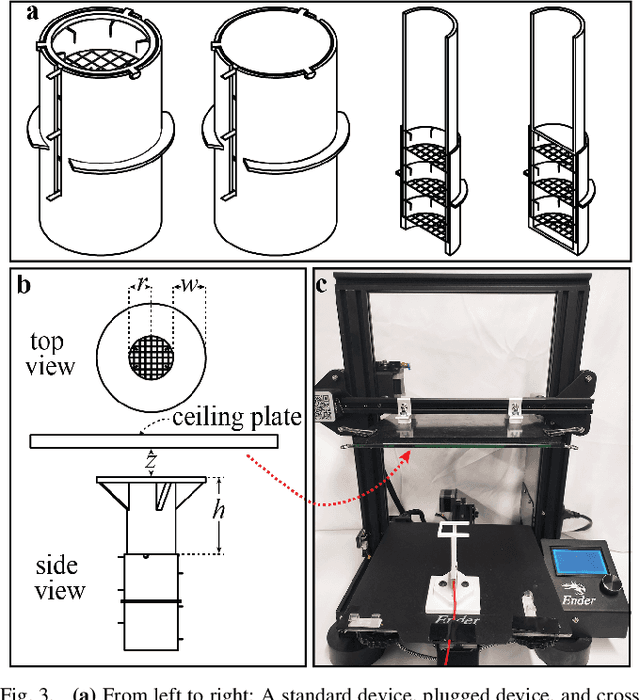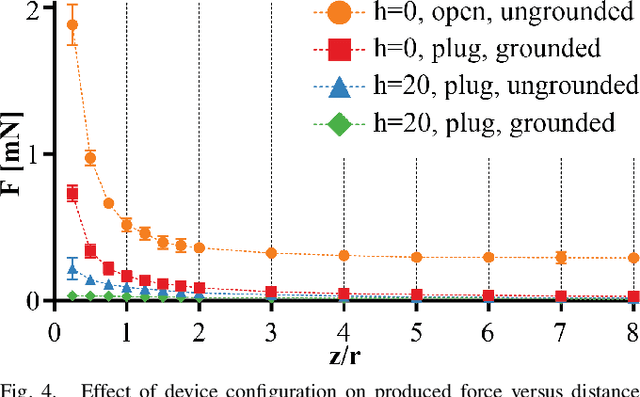Empirical Study of Ceiling Proximity Effects and Electrostatic Adhesion for Small-scale Electroaerodynamic Thrusters
Paper and Code
Oct 25, 2024



Electroaerodynamic propulsion, where force is produced via the momentum-transferring collisions between accelerated ions and neutral air molecules, is a promising alternative mechanism for flight at the micro air vehicle scale due to its silent and solid-state nature. Its relatively low efficiency, however, has thus far precluded its use in a power-autonomous vehicle; leveraging the efficiency benefits of operation close to a fixed surface is a potential solution. While proximity effects like the ground and ceiling effects have been well-investigated for rotorcraft and flapping wing micro air vehicles, they have not been for electroaerodynamically-propelled fliers. In this work, we investigate the change in performance when centimeter-scale thrusters are operated close to a "ceiling" plane about the inlet. We show a surprising and, until now, unreported effect; a major electrostatic attractive component, analogous to electroadhesive pressure but instead mediated by a stable atmospheric plasma. The isolated electrostatic and fluid dynamic components of the ceiling effect are shown for different distances from the plane and for different materials. We further show that a flange attached to the inlet can vastly increase both components of force. A peak efficiency improvement of 600% is shown close to the ceiling. This work points the way towards effective use of the ceiling effect for power autonomous vehicles, extending flight duration, or as a perching mechanism.
 Add to Chrome
Add to Chrome Add to Firefox
Add to Firefox Add to Edge
Add to Edge